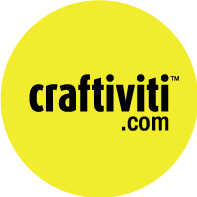Casting your own body parts could be a really cool project to do at home or with your family.
Imagine casting the hands or feet of your kids. That would be such a treat for the little ones.
Alginate is perfectly safe to use. It is a powder made from seaweed and is often used in the medical industry to make molds. A good alginate powder helps create very detailed true to life duplicates. Ideal for casting body parts or very detailed objects.
One thing important to remember about alginate molds is that it is a ONE time use mold.
Here's what you need...
Mix 1.5 part WARM water to 1 part powder. Mix fast and mix well. You will see lumps forming so really beat those down. Make sure you work very fast as the powder will start to harden almost immediately.
To be safe, you have a mixing window of only 1 minute so get at those stubborn lumps quickly.
Here you will see the alginate powder's color range from purple or pink. This indicates that the alginate is ready to start molding.
When the alginate cures, the color will change to a lighter shade of green or white. Remember it takes 1 minute for this to happen and if you are not ready, you'll need to start all over again with a new batch.
Here we are casting a thumb - Simon's thumb to be exact. You can cast a full hand, your toes, your ears or anything you can think of. We even know someone who casted her pouty lips! Alginate is non-toxic and safe, so go crazy and get creative!
The alginate is cold to the touch. While dipping you will notice the alginate turning color. At this point, try not to wiggle around in the alginate. Simon's thumb went in for 2 minutes and he only removed it after he felt the Alginate harden completely.
Kids will need to be told beforehand not to wiggle around otherwise the mold will not come away clean. So play the frozen game with them.
Here Simon's thumb mold is ready. Notice how the color of the alginate has changed from pink purple to light green? This indicates the alginate has hardened completely and is now ready to cast.
The hardened alginate mold feels like jello.
Next is preparing your plaster mixture. Add water to your plaster at a 2:1 ratio - 2 part plaster to 1 part water. The amount depends on the size of what you need to cast. Here for Simon's thumb we mixed a very small batch of plaster (around 30g).
The reason why we use these unique silicone molds especially when mixing plaster or alginate is because the clean up after is super easy. Just distort the bowl and the plaster will crack and fall right out. It's definitely an environmentally friendly alternative to throwing out plastic mixing cups.
With plaster, you have more working time so don't worry. Take your time to mix the powder and water well. Once the mixture is well mixed, slowly pour the plaster into your Alginate mold.
Make sure you pour the plaster of paris mixture slowly and against the side of the mold cavity to avoid bubbles being trapped inside the mold.
See photo above how flexible the silicone bowl is. It's perfect for pouring too!
Once you've filled up the mold with plaster, give the sides of the mold a good tap to release any bubbles that may be trapped inside.
We demolded Simon's thumb after an hour. That's the great thing about plaster, it hardens fast and makes production super easy and effective. Plus, plaster is a relatively cheap project material to work with. You can purchase
plaster of powder here>>>
Notice the fine lines and even pores on Simon's thumb casting. This is all the alginate's doing. Alginate picks up uber fine details and creates amazing replicas. We can even see Simon's thumb print!
There are many other casting powders you can work with as well. Some come in different colors and varies in how fine the grains are.
More craft materials available online and at our craft supplier at Craftiviti Sdn. Bhd. (Petaling Jaya, Malaysia).



 Stay tuned to our next workshops on anything crafty! You can check our FB or visit our Workshop page on our website right here: https://www.craftiviti.com/workshop/
Stay tuned to our next workshops on anything crafty! You can check our FB or visit our Workshop page on our website right here: https://www.craftiviti.com/workshop/













